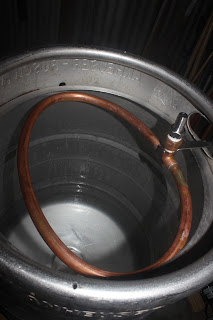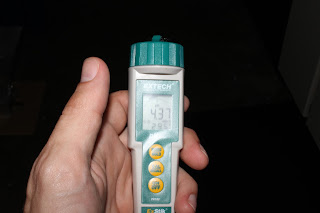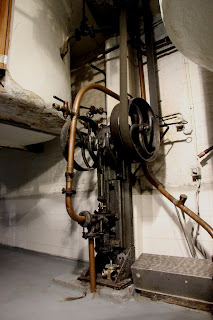In my attempts to brew a good English Ordinary BItter, I wanted to try a few new hops and grains to make this a truly English beer. To make a great English beer, you will need to start with English malts; the most widely used of course is Maris Otter. Although I did not use Maris Otter as my base, the Riverbend Heritage malt is very similar in lovibond and possibly flavor profile. I want to follow up on that at a later date with a mini mash of each to test the difference.
A twist on this beer are the selection of hops, Sovereign and Bramling Cross. Sovereign hops are very earthy/green tea characteristic and is a good middle of the road hop to accentuate a more powerful hop. The center stage hop in this beer is Bramling Cross which is a breed derived from Bramling and Manitoban hops (hence the "Cross"). Some English hop sites consider this an American style hop since it is very aromatic and flavorful but unlike American hops, it has a very constrained citrus profile but exudes black currants. In a low gravity beer like an Ordinary Bitter, it really shines!
Ingredients:
Malt -
7lb - Riverbend Heritage 6-row Malt
1lb - Crystal Maris Otter (55L)
8oz - Victory Malt
3oz - Acid Malt
Hops -
0.5oz Bramling Cross (7.8% AA) @ 60 min
0.5oz Sovereign (5.3% AA) @ 60 min
0.5oz Sovereign (5.3% AA) @ 20 min
0.5oz Sovereign (5.3% AA) @ 10 min
0.5oz Bramling Cross (7.8% AA) @ 0 min
0.5oz Sovereign (5.3% AA) @ 0 min
Water Prep:
My water has a very low mineral profile so I wanted to shoot for more of an English water profile. The addition of the 3oz of Acid Malt reduced my mash pH to 5.3 and the additions of Gypsum will help with the hop bitterness
Strike Water -
4g - Gypsum
Sparge Water -
8g - Gypsum
Mash @ 152F for 60 min and boil for 90 min. I have started to do all of my boils for 90 min just to reduce the risk of DMS.
Measured OG - 1.040
Pitched a 1500 ml starter of Wyeast West Yorkshire Ale yeast.
Measured FG of 1.007
ABV 4.3%
This beer was fantastic! It was served during our Halloween party and was quickly drained and I might have helped with that. Will make this one again very soon. I will up the Bramling Cross hops and try the Maris Otter base malt to compare to the Riverbend Heritage malt.















































